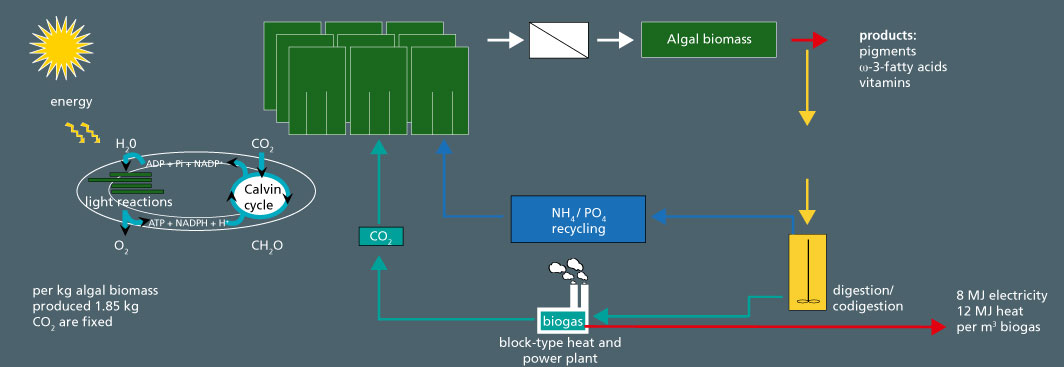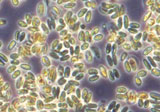For the economical and sustainable use of algae biomass for material and energy recovery it is necessary to optimize the individual steps of the process chain. The challenges for the sustainable production of microalgae are as follows:
- Energy-efficient microalgae production This requires a photobioreactor which ensures a high photosynthesis rate even at high cell concentrations and whose energy requirements for algae production are lower than the energy content of the algae biomass produced.
- Product extraction Both the solvents themselves and the quality of the solvents have to be adapted to the products; extraction should occur from the wet biomass to avoid energy input through drying processes.
- Utilization of residual biomass After recovery of the valuable products the remaining lignocellulose-free biomass can be used for anaerobic digestion into biogas and thus for an energetic added value.
- Recycling of nutrients On top of the use of exhaust CO2 gas, the utilization of wastewater containing high amounts of nitrogen and phosphate, adds to cost reduction.
- Water recycling Water can be recycled via a renewed use of the cultivating media and through the utilization of nitrogen and phosphate contained in wastewater.
 Fraunhofer Institute for Interfacial Engineering and Biotechnology IGB
Fraunhofer Institute for Interfacial Engineering and Biotechnology IGB
